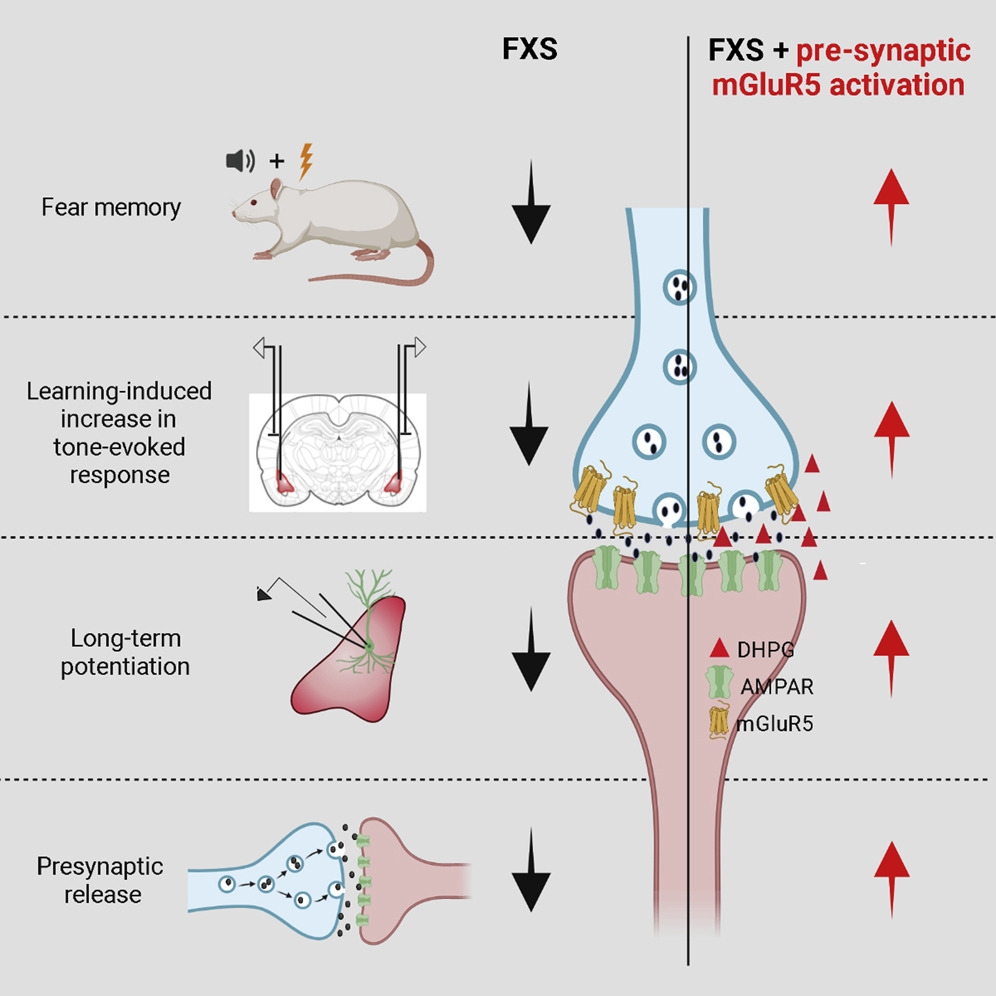Cell Reports has published the results of the study “Correction of Amygdalar Dysfunction in Rat Model of Fragile X Syndrome” by FRAXA Investigator Dr. Sumatra Chattarji and his team at the National Centre for Biological Sciences in Bangalore, India.
The researchers investigated the synaptic basis of deficient conditioned fear and its reversal in Fragile X syndrome rats. They found presynaptic mGluR5 in the amygdala. They also found that activating mGluR receptors restores normal synaptic transmission, plasticity, and fear learning.
This result contrasts with previous studies which showed that inhibiting mGluR5 in dendrites (the postsynaptic compartment) reversed impairments in Fragile X mice.
The findings emphasize the necessity of modifying the current mGluR-based framework for therapeutic strategies to consider circuit-specific differences in FXS pathophysiology.
Highlights from the study
- Recall of conditioned fear is deficient in a rat model of Fragile X syndrome. This confirms a significant deficit in learning and memory.
Synaptic transmission, and plasticity underlying fear learning, is reduced in the basolateral amygdala (BLA) this synaptic deficit is in the "fear memory" part of the brain and is likely a cause of this abnormal learning, or at least a contributing factor. - mGluR5 receptors are present in presynaptic terminals of the BLA. These are the same receptors implicated in the "mGLuR Theory of Fragile X", except that they are on the other side of the synapse (the sending side, rather than the receiving side) in this part of the brain; that makes a big difference!
- Activation of BLA mGluR5 restores synaptic plasticity and fear learning in FXS rats. In clinical trials of mGluR5 drugs from Novartis and Roche, we were trying to block these receptors; in this case, stimulating these same receptors has therapeutic effects in the Fragile X rat amygdala; in other words, the effect is exactly opposite in different areas of the brain!
This may very well explain why the clinical trials of mGluR-blockers gave mixed results. The same mGluR receptor is doing different things in different parts of the brain – one size does not fit all! This is actually not especially unusual, as many neurotransmitter systems have opposing effects in different brain regions (serotonin would be an example). The real question is which way the preponderance of the effect goes. This is only one reason why drug development for brain disorders is so difficult!
FRAXA funded multiple Fragile X studies led by Dr. Sumatra Chattarji which led to these results.
Written by
Holly Roos
Community Services Director
Holly Roos is the Community Services Director at FRAXA Research Foundation, where she has been serving since 2021. She has over 20 years of experience in fundraising, advocacy, education, and awareness within the Fragile X community. Holly lives with her children, Parker and A, in Central Illinois.



